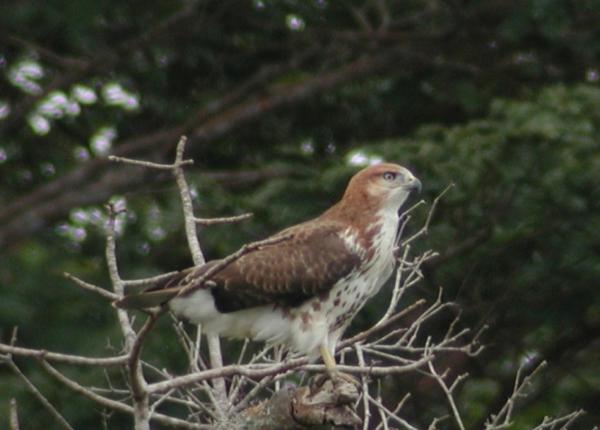Did You Know?
- This species is also known as the African Red-tailed Buzzard
- Like some other raptor species, this buzzard sometimes visits grass fires to catch insects and other prey as they flee from the heat, smoke, and flames.
- Female Red-necked Buzzards can be more than 30% heavier than the males
How The Peregrine Fund is Helping
Though The Peregrine Fund is not working directly with Black Goshawks, our conservation efforts through habitat protection, education, and community outreach extend to all raptor species. We also supply literature to researchers from our avian research library, which helps scientists around the world gather and share important information on raptor conservation. Our Global Raptor Information Network gives raptor researchers tools to more efficiently conduct their own studies while contributing to a global program. GRIN also provides citizen scientists a way to participate in raptor science and conservation.
Where They Live
The Red-necked Buzzard is found in parts of Africa, including in areas of Ethiopia, South Sudan, and Sierra Leone, among other countries. It prefers to make its home in forest edges and clearings, secondary and primary forests, and even in cultivated areas.
Why They Need our Help
Thankfully, this species is categorized as Least Concern. Since it prefers more open areas, it might even benefit from the fact that some forests are being cut. But, loss of its woodland habitat is a threat.
What They Eat
This striking raptor will feed on a long list of small animals, including insects, snakes and lizards, small rodents and birds, as well as crabs and frogs. When on the hunt, it might employ a few different techniques for seeking out and capture its prey. It might spend a long time perched in the open, waiting for unsuspecting prey to walk, fly, scurry, or slither by. When it sees something good to eat, it might jump to the ground to catch its prey or snatch it from nearby vegetation.
Nets, Eggs, and Young
During breeding season, a pair of Red-necked Buzzards might engage in courtship display flights, which include high pitched calls and acrobatic dives. When it comes to selecting a site to build its nest on, it often chooses a point high up in the fork of a large tree. The nest, made of sticks, can measure around 1 meter in diameter. It is lined with green leaves. Though rare, this raptor will sometimes choose to nest on cliff ledges or pylons. When the time is right, the female will lay between 2-3 eggs. Scientists do not yet have accurate information on how long incubation lasts or how long the young stay in the nest prior to fledgling, or flying for the first time.
Red-necked Buzzard and the World Center for Birds of Prey
The World Center for Birds of Prey offers fun ways to learn about birds of prey. Interactive activities, tours, interesting videos and a children's room with activities from coloring sheets to quizzes to costumes are all available for our guests. We also have knowledgeable, on-site staff to answer any questions you may have about Red-necked Buzzard or any other bird of prey.
References:
Global Raptor Information Network. 2022. Species account: Red-necked Buzzard Buteo auguralis. Downloaded from http://www.globalraptors.org on 10 Nov. 2022
Kemp, A. C. and G. M. Kirwan (2020). Red-necked Buzzard (Buteo auguralis), version 1.0. In Birds of the World (J. del Hoyo, A. Elliott, J. Sargatal, D. A. Christie, and E. de Juana, Editors). Cornell Lab of Ornithology, Ithaca, NY, USA. https://doi.org/10.2173/bow.renbuz1.01









